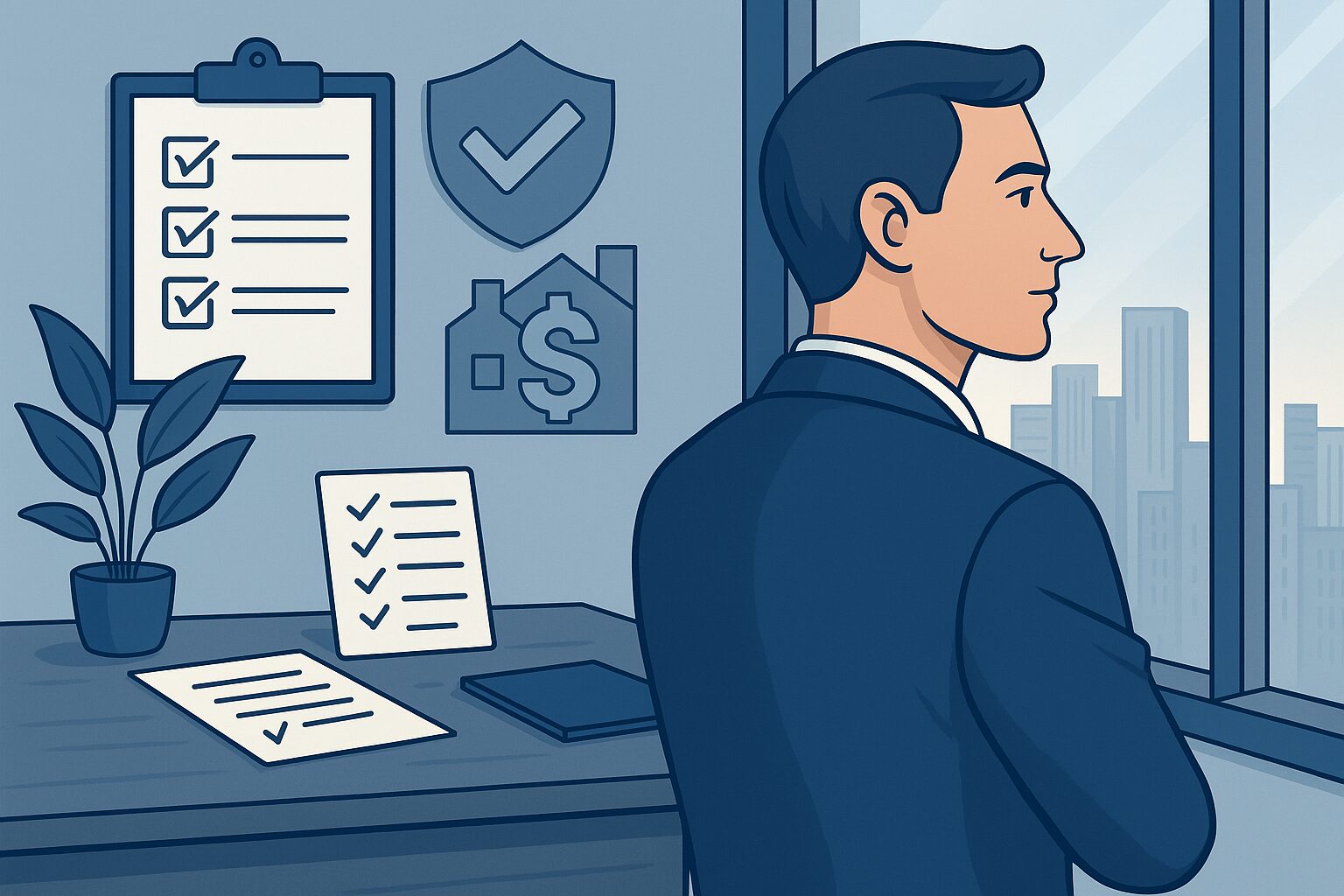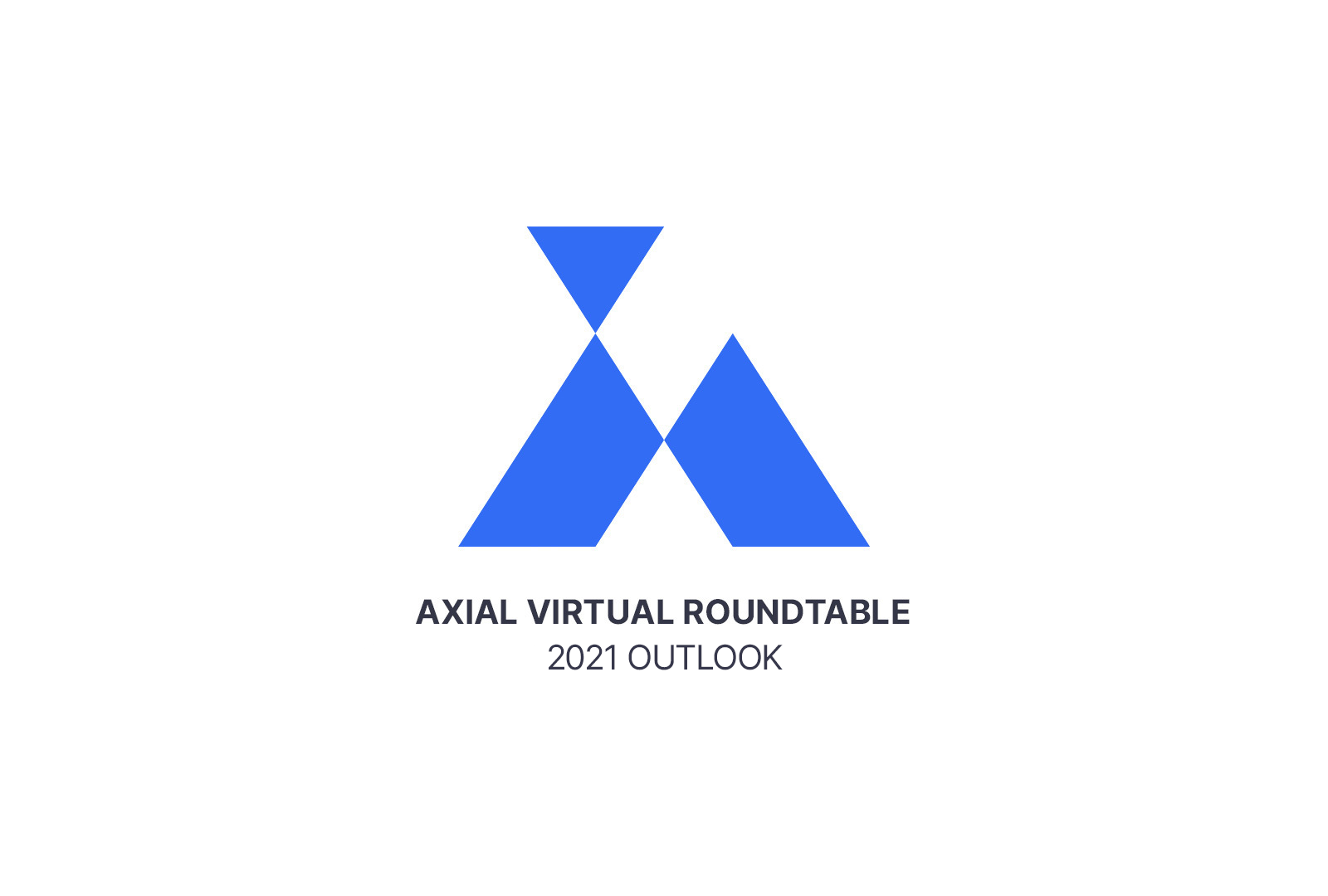Axial was back this week with its first event of 2021, in which 10 lower middle market deal professionals sat down (via Zoom!) for a discussion on what to expect in the year ahead. Topics of conversation included deal structures, debt markets, and the shift to virtual. Participants also provided insights on how to get deals done in a post-COVID world and gave predictions around deal activity in the hyper-competitive market of 2021.
Thank you to below Axial members who participated in the discussion:
Arjun Murthy, Director, Cascade Partners
Ben Frazier, Managing Partner, Timoneer Strategic Partners
Craig Korte, Director of Business Development, Industrial Opportunity Partners
David Crean, Managing Director, Objective Capital Partners
Geoffrey Faux, Principal, Clearview Capital
Kate Faust, Partner, Rockwood Equity
Glenn Oken, Managing Director, Mangrove Equity Partners
Walker Harbison, Director of Corporate Development, Alitus Partners
Matthew Miller, Managing Director, BlueWater Partners
Keith Dee, President & Founder, Osage Advisors
Video
Audio
Show Notes
Introductions 00:00 – 7:05
What does it take to get deals done in a post-COVID world? 7:30
- Mangrove Equity is currently under LOI on 3 different deals (pretty advanced — they went under letter in late Q3/early Q4) and closed one deal recently
- Their thought process was to be flexible and open-minded around financials; if they saw softness, they dove deeper. Are the issues truly COVID-driven, and are they going to be temporary? If yes, they tried to be flexible on structure of the transaction
- Something that was a bit tougher to solve for: How do you figure out the human aspect of it? How and when do you go and visit a company?
- Clearview Capital: All deals closed in 2020 were post-COVID and valuations were not as easy to calculate…you need to triangulate numbers a lot more and as an investor, you need to be comfortable with the fact that even over the next 12 months, the business numbers may not normalize.
- It comes down to: how much uncertainty are you willing to weather as an investor?
- David Crean from Objective Partners has been working with a smaller business that went under LOI in November for an add-on deal; the company was a healthcare company that was severely affected by the half on clinical trials during COVID, so it’s all come down to structure and how much the seller is willing to take on to get the deal done
What do the conversations with founders sound like right now? 13:00
- There’s a major component of the discussion around valuation: what is realistic?
- Talking through investor expectations is also very important, because business owners need to understand that investors are naturally risk averse, so it’s going to take a lot more to get them comfortable with soft numbers, and it will likely come down to the structure of the transaction
- Osage has 3 deals that are in the LOI stage; they’ve been talking a lot about shared risk
- If you’re going to market right now, you need to anticipate things like taking cash off the table, earnouts, equity rolls
- The initial conversation with businesses now is not just how you’re going to get a deal done right now, but are you sure you’re ready to try to get your deal done right now
- There was less of an appetite for structured deals early on post-COVID when owners were coming off of high valuation expectations in 2019, but now they’ve seemingly gotten much more comfortable with flexibility
- Everyone — both sides of the table — is trying to be flexible right now
Is there anything novel in the structures that are being presented? 17:00
- How is the flexibility manifesting itself throughout the deal process?
- One of the earnouts that Osage is working on is structured as such so that any dollar earned over where they are today will receive the same multiple (in this case 6x)
- It’s not that earnouts didn’t exist before, rather that they were used much more infrequently
- BlueWater Partners: One way people are being a bit more flexible post-COVID is to accelerate earnout payments to the seller if the business recovers more quickly; it’s been a good risk-sharing tool to tie the payments to the rate of recovery
- Alitus closed a deal in September; it was supposed to be a 60-day close and ended up taking upwards of 6 months because of COVID; they included an earnout that was structured to get the seller their entire valuation payout as soon as they have a trailing 3-month run rate of where they were pre-COVID
- Historically there was a lot of resistance on earnout from the sell side, especially when it’s a founder-owned business and they’re planning on stepping back and feel like they won’t have control over the EBITDA anymore
- Timoneer just went under LOI on a deal overseas that is about 50% down because of COVID simply because of lockdown measures, so the earnout that they’ve put in place is for a very high percentage of the valuation of the business; the two owners are staying involved but they don’t have much day-to-day involvement
- Timoneer has generally experienced sellers being much more open to carrying a higher piece of the purchase price to shorten the time to close, though this was more of the case when debt markets were closed off
- Because more people are doing earnouts, firms need to get more competitive around the earnout structures to make the seller whole more quickly
- Industrial Opportunity Partners (IOP) did 3 new platforms and 6 add-ons last year, many of which were post-COVID; none of the structure that was put in place was there to reduce value in any way, shape or form, it was just there to reallocate the risk
- Earnouts are less aggressive than trying to bring down valuation overall
Has anyone seen the inclusion of a clawback? 30:00
- Clawbacks are used between GPs and LPs in the market, but what about using them as the “reverse earnout” in a transaction structure?
- Osage has seen the concept of clawbacks being introduced to business owners, and in almost all cases it has been received very poorly
- Clearview Capital thinks of the businesses that they’re working with as a true partner; when you introduce the idea of taking money away from your partner — whether it’s tied to financial performance or not — it is very easy to muddy the waters
- It’s a much better dynamic to give someone upside
- With the dynamic of a clawback, you’re not on equal footing from the get go
Have the debt markets fully normalized? 34:55
- What does a normal debt market look like with a continued pandemic and new administration? Is it pre-COVID normal or a new normal?
- There was a period when lenders weren’t even bidding on anything — that’s over.
- There is now a willingness to lend and, on average, pricing seems to be pretty close to pre-COVID
- However, for businesses that don’t have the “recession-proof” or “pandemic-proof” stamp, terms are a bit more aggressive and pricing a bit higher than it was pre-COVID
- Business owners were forced to make a lot of tough decisions during the pandemic and figure out where they could safeguard themselves. As a result (and alongside the stimulus) the usage of lines of credit is way down and availability is way up
- Conservatism is showing up in how much a lender is willing to lend. It’s not a huge difference, though — maybe a quarter or half a turn.
- There’s still a lot of competition out there, and private lenders have changed the environment.
How do lenders seem to view the earnout component in a transaction? 41:48
- One place where lenders have stayed pretty staunch is around not giving “breaks” due to COVID
- Clearview has experimented with a delayed draw concept built into the credit facility that is specifically related to the earnout
- If the company gets to the financial point where an earnout is earned, the leverage is going to be significantly less at that point than it is going into the deal; most lenders seem to feel comfortable with “reloading” at that point
- That’s not necessarily to say that 100% will be covered by the credit facility — there may be more equity that needs to be kicked in
- Alitus has also used the delayed draw concept where they baked in benchmarks for the lender and felt it made everyone feel good about the structure.
Pricing, Valuation & Competition in 2021 – 45:30
- There’s incredible demand right now with all of the dry powder out there
- Mixed with the fact that it’s harder to find a quality deal in the market right now, competition is at an all time high
- KKRs and Carlyles are moving down market and scooping up companies that they never would have even glanced at before
- There’s also likely going to be a continued increase of independent sponsors entering into the market which increases competition
- There will probably be a lot of businesses coming back to market that were failed processes in 2020
- It seems more than plausible that valuations and volume levels may return to 2019 levels this year
- Strategics have a leg up because they understand the industry and understand what businesses have been going through COVID
- The number of deals that came across IOP’s desk was down about 20% in 2020. There was no reason for that decrease from 2019 other than COVID, so presumably, those are all businesses that will come to market this year
- Transactions that came to market at the end of last year looked very healthy, so it will be interesting to see what starts to come to market in Q1.
The people side of a transaction- 57:00
- There’s going to be a big need to build alignment and relationships with businesses this year in a new normal with a hybrid of in-person and virtual
- (pre-COVID) Rockwood developed a suite of organizational and behavioral help tools to use with their partners
- There’s going to need to be much more of a focus on how to help people grow once the dust has settled
The new normal of virtual – 59:30
- We’ve proven that we can do basically everything on Zoom at this point, but how do people feel about that?
- It’s nice to have family time and to be on the road less — these are all great silver linings
- Interoffice communications are great digitally, but deal professionals want to go back to being able to see clients and prospects in person
- From the investment banker perspective, there used to be a million phone calls and then some in-person time maybe with some wining and dining, but now you can sign clients over Zoom
- Regional restraints are gone, which is great
- Management presentations can be seamlessly done via Zoom
- The in-person piece of things that people miss are the more emotionally-driven relationship aspects of the business rather than the day-to-day
- While Zoom doesn’t get you 100% of the way there (versus in-person), you do gain something from the shift from phone call to video; this has helped faceless conversations become more personal
- There are hopes for a hybrid world, not a fully-virtual world later this year!
Axial is excited to regularly host virtual roundtables as well as a variety of other virtual (and hopefully in-person!) events in 2021. See the full event schedule here and reach out to kristina.mayne@axial.net if you’d like to participate in a future event.

